Most parakeets will spend a few minutes sizing up any new object introduced to the cage. Timid birds may even flap around in a brief panic. But they will soon get used to the toy, and will begin interacting with it.
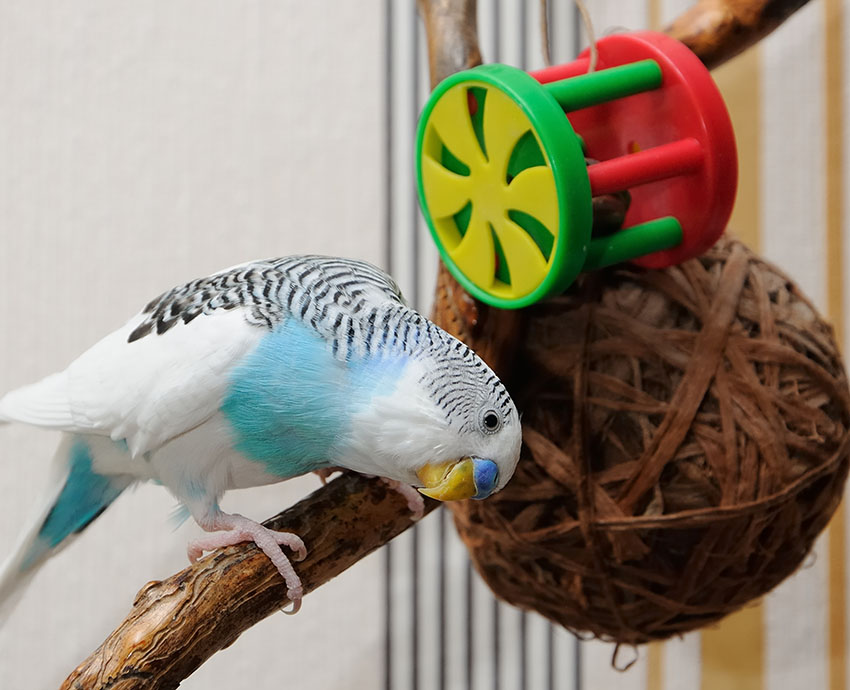
Parakeets need a variety of toys
Safe Toys for Parakeets
Toys need to be safe. That means no sharp edges, or objects with gaps or loose threads where a foot, toe, beak or head might get caught. If a parakeet feels trapped, it will panic and can easily die of a broken neck, or through stress.
Store-bought cage toys intended for larger parrots are often not suitable for parakeets. If buying in a store, ask the staff for advice, and use your own common sense too. These are the questions to ask yourself: “Is it too big, too sharp, a potential trap, or toxic?”
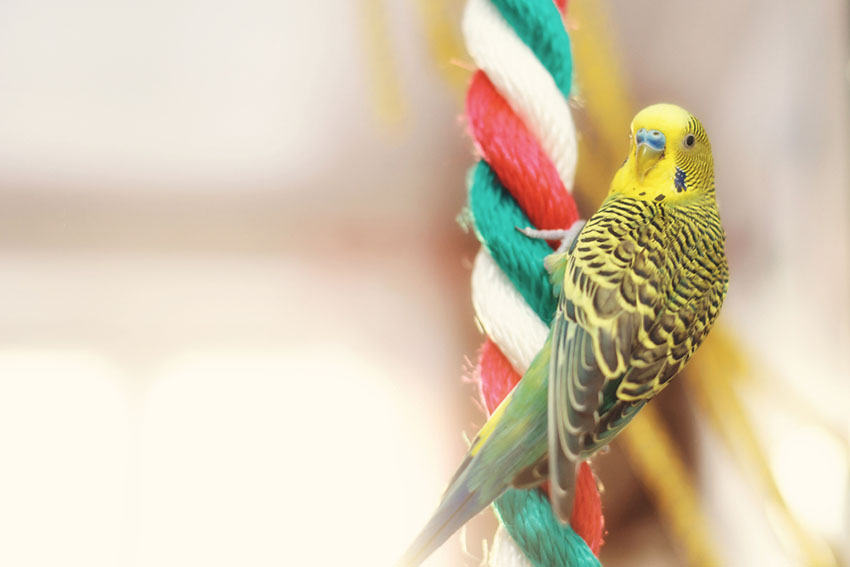
Parakeets have a lot of fun with safe cage toys
Any colored wood needs to be non-toxic, so the dye needs to be safe for birds – they are quite sensitive to chemicals in their environment. Store toys will usually be colored with vegetable dyes, but if there is any doubt, don’t buy. Never introduce varnished or painted objects into the bird cage.
Modern acrylic plastic toys and cage attachments are fine, and many people opt for these as they are easy to clean.
There are four basic categories of parakeet toy: swinging, climbing, chewing, exploring.
Parakeet Toys: Swings
Parakeets are natural swingers! They will use anything suspended from the top of the cage as a swing. A bird-safe hanging rope, a suspended bell, or the classic parakeet perch/swing. A bell or hoop attached to a swing makes things even more fun for the bird.
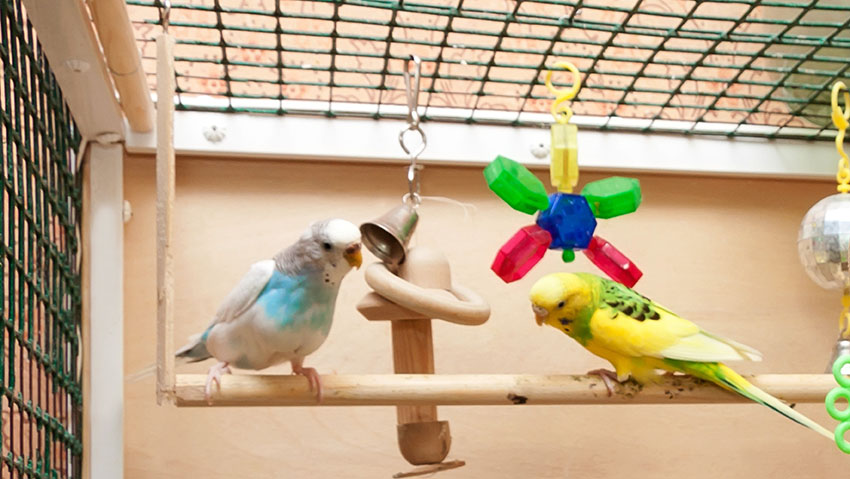
Swinging parakeets
Parakeet Toys: Climbing
Buying climbing toys from a reputable store is always recommended, to make sure the toy is safe. Make sure the item you buy is custom-made for small birds such as parakeets.
Climbing ropes are parakeet favourites, and they can be fitted vertically and/or horizontally. The rope has to be tightly wound, to prevent loose threads catching on toenails or beaks.
Parakeet Toys: Chewing
Parakeets are like feathered rodents when it comes to nibbling and chewing. They love it. A cuttlefish bone and mineral block provide lots of the nibbling requirements, but they will also enjoy playing with balsa wood (as long as it is not treated with toxic chemicals).
Hen parakeets have a strong urge to chew during the breeding season, and providing her with chewables in the cage will make sure she doesn’t chew your books and wallpaper when she’s outside the cage!
Parakeet Toys: Exploring
There are various types of exploring toys, based on different textures, and attachments such as perch, bell, ladders, or more complex toys involving small balls, skittles and mirrors. ‘Exploring’ toys are multi-sensory, providing stimulation through noise, movement and texture.
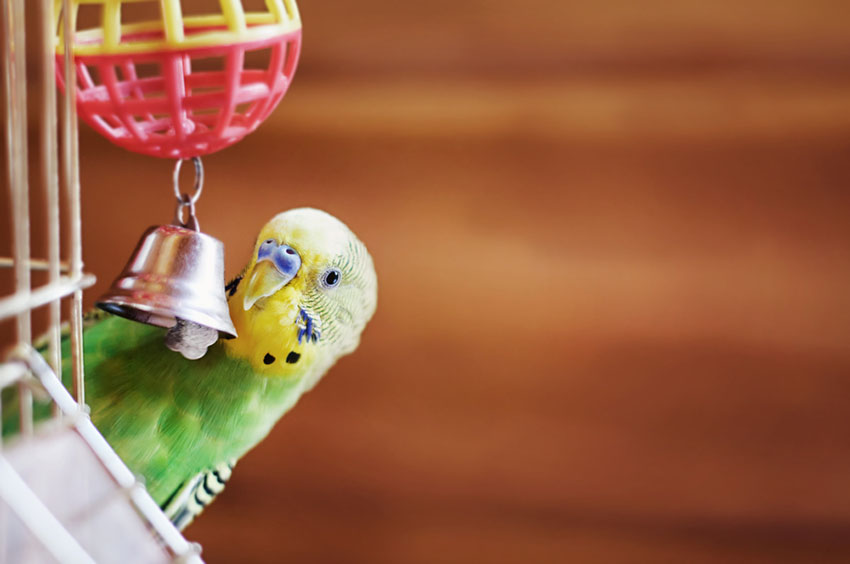
Does this parakeet picture ring a bell?
Parakeet Bells
These are all-purpose toys, as the parakeet will climb and swing on them, hit them with his beak, and nibble the bell clapper inside. Bells often feature as part of another accessory such as a swing, perch or hanging toy. The bells should be the open-bottomed type, not the Christmas ‘jingle bell’ type with its potentially toe- or beak-snagging slit.


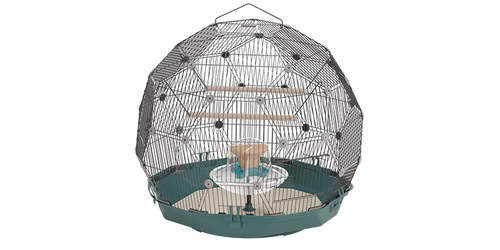
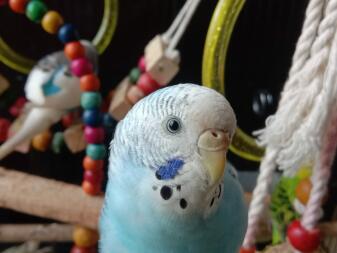
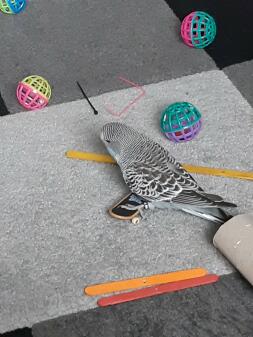
Comments
Victoria, 27 January 2024
All of these tips are amazing, I'm planning on getting 2 parakeets and I'm still new to all of this. I hope my future parakeets will love their environment! Can i put the cage in a corner? (against two walls.)
Freya, 1 August 2019
am getting budgies so this info is really usefull thanks
Susanne, 18 July 2019
Hi please can I ask if a pair of budgies pair up do they mate for life or can you Charge there mates please
Marzbar28, 15 February 2019
Wow! Thanks, this is very good advice. I just got my budgie and I have a few good toys for her. She seems happy! Thanks again!
Florence, 13 June 2018
I have learned so much from the info. I loved it and I'm sure my bird is much happer one too.